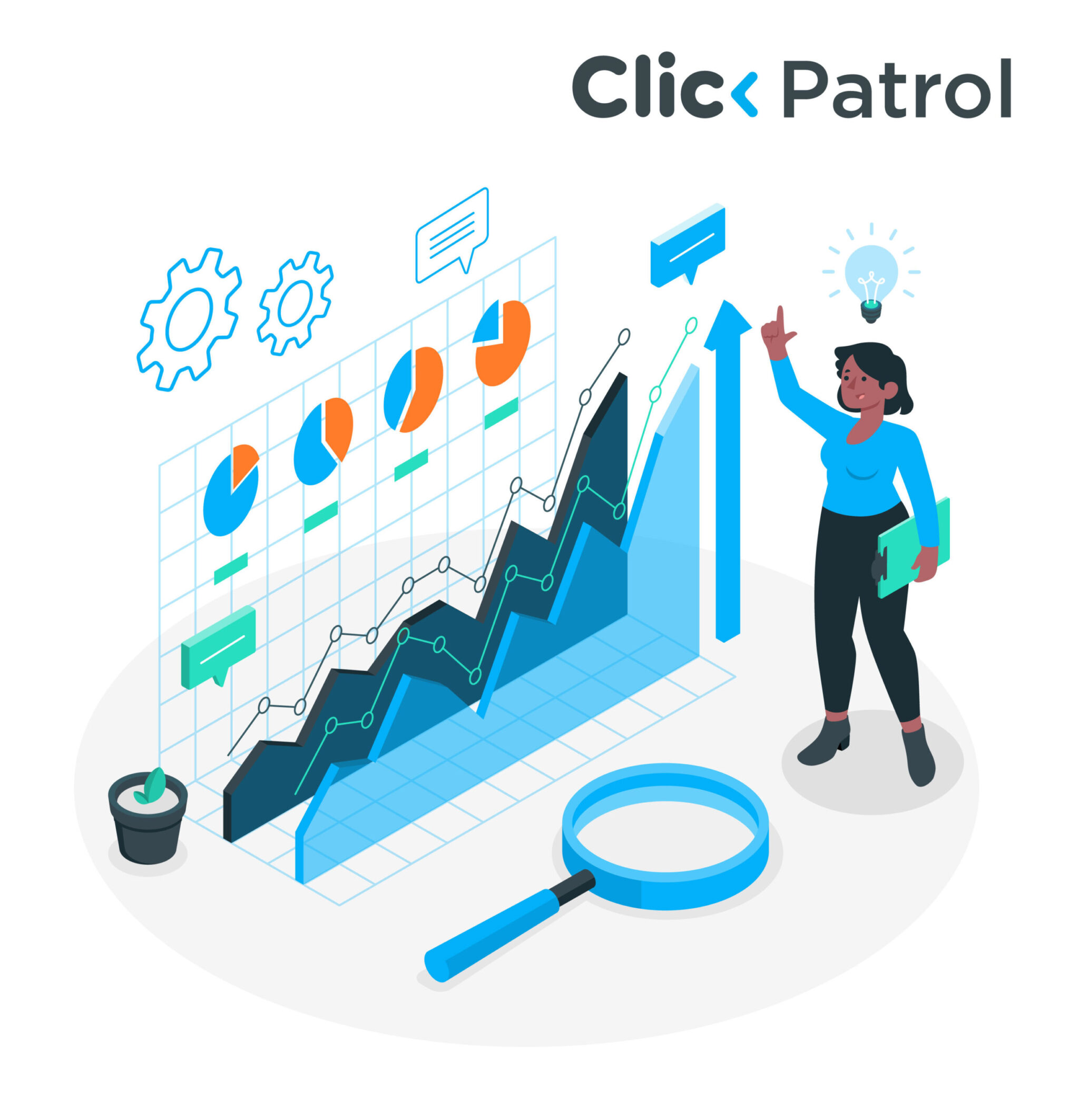
Analytics conversion tracking: Your ultimate guide to boosting marketing ROI
Abisola Tanzako | Apr 22, 2025

Table of Contents
- What is analytics conversion tracking?
- Why is conversion tracking important?
- Key statistics on conversion tracking
- How to set up analytics conversion tracking
- Step 1: Define your goals
- Step 2: Set up conversion events
- Step 3: Implement tracking codes
- Step 4: Monitor performance
- Step 5: Optimize based on insights
- Common challenges in analytics conversion tracking
- Analytics conversion tracking best practices
- The essential role of conversion tracking in 2025 and beyond
- FAQs
Based on statistical projections, global digital ad spending is expected to reach $870 billion by 2027, making conversion tracking a necessary component for business success.
The analytics conversion tracking system is a fundamental component of data-driven marketing, as it assesses marketing efforts through the quantitative measurement of their influence on sales metrics, subscriber acquisition, and customer retention statistics.
This guide will explore a detailed assessment of analytics conversion tracking fundamentals, what it is, why it is essential, and how to set up analytics conversion tracking.
What is analytics conversion tracking?
Analytics conversion tracking refers to the method used to track and measure systematic usage events, often referred to as conversions, that occur on websites and digital platforms.
Businesses that utilize analytics tools for conversion tracking achieve an average 15-20% increase in their marketing return on investment (ROI), according to HubSpot’s 2023 report.
The transformational potential of user behavior analysis through data becomes evident through this data point. A business establishes predefined actions under its objectives, which could consist of:
- Completing an online purchase.
- Filling out a contact form.
- Subscribing to a newsletter.
- Downloading a whitepaper or app.
- Users can participate in webinars and surveys by registering for them.
Why is conversion tracking important?
The practice of conversion tracking serves as both an operational need and a strategic implementation. Here’s why it matters:
1. Improved return on investment (ROI): Marketers achieve better budget allocation by precisely identifying conversion-positive campaigns and their corresponding channels or keywords.
The 10% conversion rate achieved on Facebook ads allows marketers to redirect funds toward Twitter since its conversion rate reaches only 2%.
2. Enhanced customer understanding: Monitoring conversion activities shows how customers interact with your brand operations.
Customers who view videos instead of reading blog posts are more likely to convert. The data obtained helps businesses build their personas and create content plans.
3. Better campaign optimization: Analyzing high-performing assets enables you to replicate or refine successful elements from conversions reaching 15%, while redesigning poor-performing elements.
A continuous development process ensures that improvement happens one iteration at a time.
4. Data-driven decisions: The practice of relying on guesswork to determine successful strategies is no longer viable.
Through conversion tracking, users gain objective evidence, which replaces the need for intuition in their business decisions.
Key statistics on conversion tracking
They include:
Google Ads suggests that companies adopting the correct attribution models generate 20% more conversions on average. Accurate tracking setups demonstrate their true worth to the marketplace.
A Forbes study demonstrates that businesses maintaining continuous conversion rate observation are 67% more likely to meet quarterly objectives.
Data from eMarketer reveals that 78% of marketers identify conversion tracking as their leading task for enhancing digital campaign effectiveness.
How to set up analytics conversion tracking
Conversion tracking setup is a structured process compatible with your analytics tool. In the following list, we outline a detailed process using Google Analytics, the most widely used tool, which commands a 92% market share in web analytics.
Step 1: Define your goals
Begin by defining what success means for your business. Your goals must be specific, measurable, and future-oriented. For example:
- An e-commerce site might track successful checkouts.
- Submitting a lead form might be a target for a B2B company.
- A newsletter sign-up might be an objective for a content publisher.
Avoid loose objectives like “boost engagement.” Instead, specify a concrete action, such as “track downloads of our new eBook.”
Step 2: Set up conversion events
Conversions in GA4 are tracked as events. Visit your GA4 property’s “Events” tab and define significant actions as conversions, such as:
- Mark a “purchase” event whenever a person makes a purchase.
- Make a “form_submit” event for lead captures.
If you are using Universal Analytics (UA), you will create goals under the admin panel, specifying details like destination URLs (e.g., a “Thank You” page after purchase).
Step 3: Implement tracking codes
Tracking codes, or tags, are pieces of JavaScript that trigger when a user acts. Google Tag Manager (GTM) simplifies it by allowing tag rollout without modifying your site’s underlying code. Here’s how to do it:
- Create a tag in Google Tag Manager (GTM) for your conversion event (e.g., button click).
- Create a trigger, such as “PageView,” on a confirmation page.
- Test the setup in GTM Preview mode to ensure the tag is firing correctly.
Precisely, 85% of marketers use GTM for tag management, a Tag Inspector Tag Management Survey in 2022 found.
Step 4: Monitor performance
After live monitoring, measure conversion data in the “Reports” tab of Google Analytics. Critical data to monitor includes:
- Conversion rate: The proportion of visitors that convert (e.g., 3% translates to 3 out of 100 visitors).
- Source/Medium: Which sources (e.g., organic search, paid advertising) drive conversions?
- Behavior flow: This is the journey users take before converting.
For instance, if 50% of your conversions are driven by paid search but just 20% of your traffic, that is an indicator that you should allocate additional funds to that channel.
Step 5: Optimize based on insights
It takes more than numbers; something needs to be done. Use insights to enhance your strategy:
- If a campaign is low on conversion (e.g., 1%), experiment with new ad copy or targeting adjustments.
- If you are half as likely to convert as desktop users, make your mobile site simple and quick.
Companies that optimized their marketing strategies based on the 2024 Marketing Week survey data reported a 25% increase in conversions after six months.
Common challenges in analytics conversion tracking
Although conversion tracking delivers advantages to marketers, they need to overcome the following challenges:
- Cross-device tracking: Tracking customers across different devices to facilitate product purchases requires advanced capabilities, as 68% of buyers utilize multiple devices during their purchase journey. Google’s User ID feature serves as a solution but does not resolve all issues.
- Attribution complexity: The final conversion occurs due to the first ad click, followed by a subsequent email, which is supported by remarketing advertising. The attribution models that use last-click multi-touch or first-click approaches do not provide flawless solutions to this challenge. Market research from 2023 uncovered that accuracy problems with attribution cause difficulties for 62% of marketers.
- Data privacy regulations: The GDPR and CCPA impose strict restrictions on companies’ collection of customer data. The GDPR and related privacy laws also impose financial and fiscal risks, forcing marketers to manage tracking compliance requirements through penalties of up to $20 million or 4% of their annual revenue.
- Technical errors: Various sources alter the data, primarily broken tags, misconfigured goals, and the use of ad blockers by 43% of internet users, as reported by Statista. Regular audits are essential.
Analytics conversion tracking best practices
- Define clear goals: Your conversion goals should be explicitly defined to align with your business objectives. Define conversion rules precisely to include purchase decisions, sign-up processes, download actions, and additional specific actions.
- Use tags or pixels correctly: Ensure that tags or Pixels function correctly by implementing conversion tracking tags (for example, Google Ads or Facebook pixels) precisely at strategic locations on your website or app. Double-check these placements to prevent missing data and duplication.
- Track multiple conversion points: Your tracking system should measure conversion activities throughout the customer experience beyond the last point. It should monitor actions that lead to conversions, such as newsletter subscriptions and adding items to the cart.
- Regularly test and optimize: Your tracking systems need periodic audits to verify correct operations. Convert campaign optimization should occur continuously by leveraging insights from your conversion data.
- Leverage analytics tools: Utilize advanced analytics platforms, including Google Analytics and other conversion tracking tools, to gain a deeper understanding of audience behavior, which will help identify areas for improvement.
The essential role of conversion tracking in 2025 and beyond
Digital marketing success demands analytics and conversion tracking as its core functional elements.
Through conversion analytics, businesses gather data to measure success, refine marketing campaigns, and analyze customer behavior with precision.
The obstacles to conversion tracking, such as cross-device tracking and privacy laws, remain substantial; yet, the positive outcomes, including improved ROI and superior insights and decisions, help overcome these obstacles.
Rising digital spending combined with intensifying competition makes conversion tracking essential for survival in digital marketing throughout 2025 and beyond.
FAQs
Q.1 Which conversion tracking tools should I consider using?
Consider using Adobe Analytics for enterprise-level analytics data, HubSpot for CRM-enabled tracking, and Facebook Pixel for social media advertisement performance.
Q. 2 Is conversion tracking available for offline campaigns?
Yes, via methods such as call tracking tools (e.g., CallRail) or one-off promo codes in conjunction with offline advertisements.
Q. 3 How often should I review conversion data?
Weekly monitoring catches trends early, but daily monitoring is appropriate for high-budget campaigns. According to a 2023 Adobe study, 60% of top marketers monitor their social media weekly.
Q. 4 What is a good conversion rate?
Industry benchmarks vary: e-commerce typically ranges from 2% to 3%, while SaaS can be 5% to 10%. Attempt to surpass your baseline.





